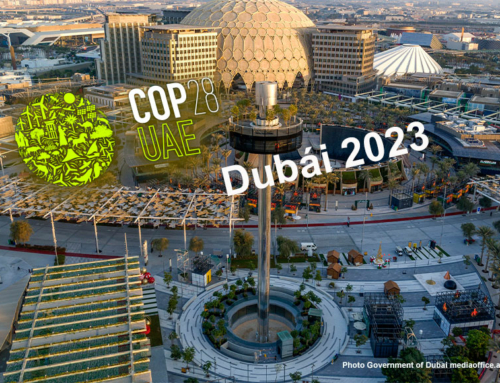Solar energy is one that uses light or heat from the sun to generate electricity or produce heat. Photovoltaic solar panels convert sunlight into electricity through a process called photoelectric. There are millions of people who already use electricity generated by solar energy. The world is aware of the importance of the transition towards a sustainable economy, based on low greenhouse gas emissions to curb global warming and therefore climate change. However, there is still a long way to go to significantly reduce the use of fossil fuels such as coal, gas and oil.
The sun, a power generator difficult to imagine
The solar energy received each year by the Earth is of such magnitude that it is equivalent to nearly double the total energy produced in all times by non-renewable energies, such as oil, coal and natural gas. Solar energy is clean, since it leaves no residue or pollution. It is renewable, because the sun has millions of years left before it is extinguished.
Solar energy is produced by light or heat from the sun, captured by solar panels and transformed into electricity. Therefore, solar energy is going in the right direction of the Paris Agreement, whose postulates prescribe to limit the increase in world temperature to no more than 2 °C, from its pre-industrial level, by the end of the century.
The substitution of fossil energies by clean and renewable energies
As more electric cars, wind energy and solar energy are used, the main technologies called to substitute coal, natural gas and gasoline, greenhouse gas emissions will be decreasing as well as warming global and climate change. These energies belong to the family of fossil fuels that humans have used for centuries to move transport, machinery, factories and illuminate, heat or cool our homes, shops, schools and hospitals. But, as they have been useful to us, they have also harmed us, because during their combustion they emit greenhouse gases, which increases the global temperature and therefore climate change.
Advantages of solar energy.
Solar energy is inexpensive, inexhaustible and ensures the energy independence of countries. Thanks to advances in research and technology, coupled with the increase in production, the cost of photovoltaic solar energy has become cheaper over time. The projections indicate that the energy based on the sun will become one of the main substitutes for fossil fuels.
Three ways to take advantage of the sun
Passive systems are used to capture and accumulate heat from solar energy. They get their name because, different from solar panels, they do not use other electromechanical devices to capture the heat, nor do they transform it into another type of energy for immediate use or storage.
Thermal systems are used to produce heat for cooking, heating water or the environment. It can also produce mechanical energy and from it electrical energy. Additionally, it is possible to use an absorption refrigeration machine, which uses heat instead of electricity to produce cold, with which air can be conditioned in the rooms.
Photovoltaic systems obtain energy from solar radiation and convert it into electricity through solar panels, formed by semiconductors called photovoltaic cells. When sunlight hits them, a direct electric current flow is created, which is converted into alternating current by means of an inverter. From there it goes to a meter where it will be used. The surplus goes to the electrical system.
Inside a photovoltaic solar panel
The interior of a photovoltaic solar panel is made up of numerous solar cells or small cells, almost always of crystalline silicon. These semiconductors can behave as conductors of electricity or as insulators. One part has electrons left over and the other part is missing. When sunlight, composed of photons or particles carrying electromagnetic radiation such as gamma rays, X-rays, ultraviolet light, visible and infrared light, microwaves and radio waves, hits the photovoltaic cells of the plate, a current flow is created electrical between the layers. Once the electricity is generated, it is stored in banks of batteries to be used at any time. If the surplus exceeds the capacity of the battery, it is sold to the electricity grid. If at any time the electricity is used up, it is bought from the network.
The photovoltaic solar energy parks
They consist of land of large extensions or aquatic surfaces, in the case of floating parks, provided with interconnected solar panels to capture large amounts of sunlight and transform it into electrical energy. A solar park of ten acres can have about four thousand photovoltaic panels of 250 watts each, provided with supports that allow varying the inclination of the panels between 15° and 45°, depending on the position of the sun and the season of the year, plus of owning several investors and a transformer. The inverter converts the energy captured into AC to be used in the electrical network. A solar park with these characteristics can generate thousands of watts of electricity per second.
What happens on cloudy days
It is not necessary to have direct light, since on cloudy days the solar panels also work, although not with the same efficiency as with clear skies. If the photovoltaic cell is not aligned perpendicular to the sun, between 10-25% of the energy is lost. In solar power plants, solar trackers are being used to maximize energy production. The dust and soot deposited on the panels also affect the efficiency of electrical generation.
The ten largest producers of wind energy
It is not easy to obtain an exact statistic regarding the world production of solar energy, since anyone can install photovoltaic panels on the roof of their house and generate electricity on their own, which makes it difficult to raise some reliable statistics on the topic. However, for an approximation, these ten countries are the ones that produce the most electrical energy from solar energy:
- China (130.4 GW / 2. United States (85.3 GW) / 3. Japan (63.3 GW) / 4. India (57.4 GW) / 5. Germany (48.4 GW) / 6. Italy (22, 6 GW) / 7. United Kingdom (14.2 GW) / 8. France (12.8 GW) / 9. Australia (12.2 GW) / 10. Pakistan (10 GW).
Of total world energy consumption in 2005, between 80% and 90% corresponded to the use of fossil fuels and the rest to the use of clean energies, including solar energy. Thirteen years later they have had considerable growth, although reliable figures are not available
Threats on solar energy
Among the dangers that hover over solar energy and other clean energy sources is the continuous discovery of conventional hydrocarbon reservoirs, many of them of enormous dimensions. Another danger is fracking, technology by which unconventional gas and oil is extracted, located in shale beds several kilometers deep. Nearly fifty countries have them. Some of these nations may be tempted to join the club of hydrocarbon producing countries to achieve their energy independence. It is also worth mentioning countries that still have large reserves of coal, oil and natural gas.
To all this is added the lifting of the prohibitions to exploit deposits located in sanctuaries protecting the environment. The administration of Donald Trump “plans to open a large ocean surface to marine exploration and, for the first time in 40 years, allow drilling in the Arctic National Wildlife Refuge (…) with some 11.8 billion barrels of technically recoverable oil” It is not difficult to foresee a significant drop in oil and gas prices, putting the competitive capacity of the solar panel industry at risk, in addition to the commitments acquired through the Paris Agreement.
For all that described, there is a conflict between the supporters of fossil fuels and those who fight against climate change. A stellar collision between the deniers and those who believe in global warming and its foreseeable damages. By 2020, we will know who is willing to schedule the closure of their hydrocarbon deposits to comply with the schedule established in the Paris Agreement.
Sandor Alejandro Gerendas-Kiss







Leave A Comment